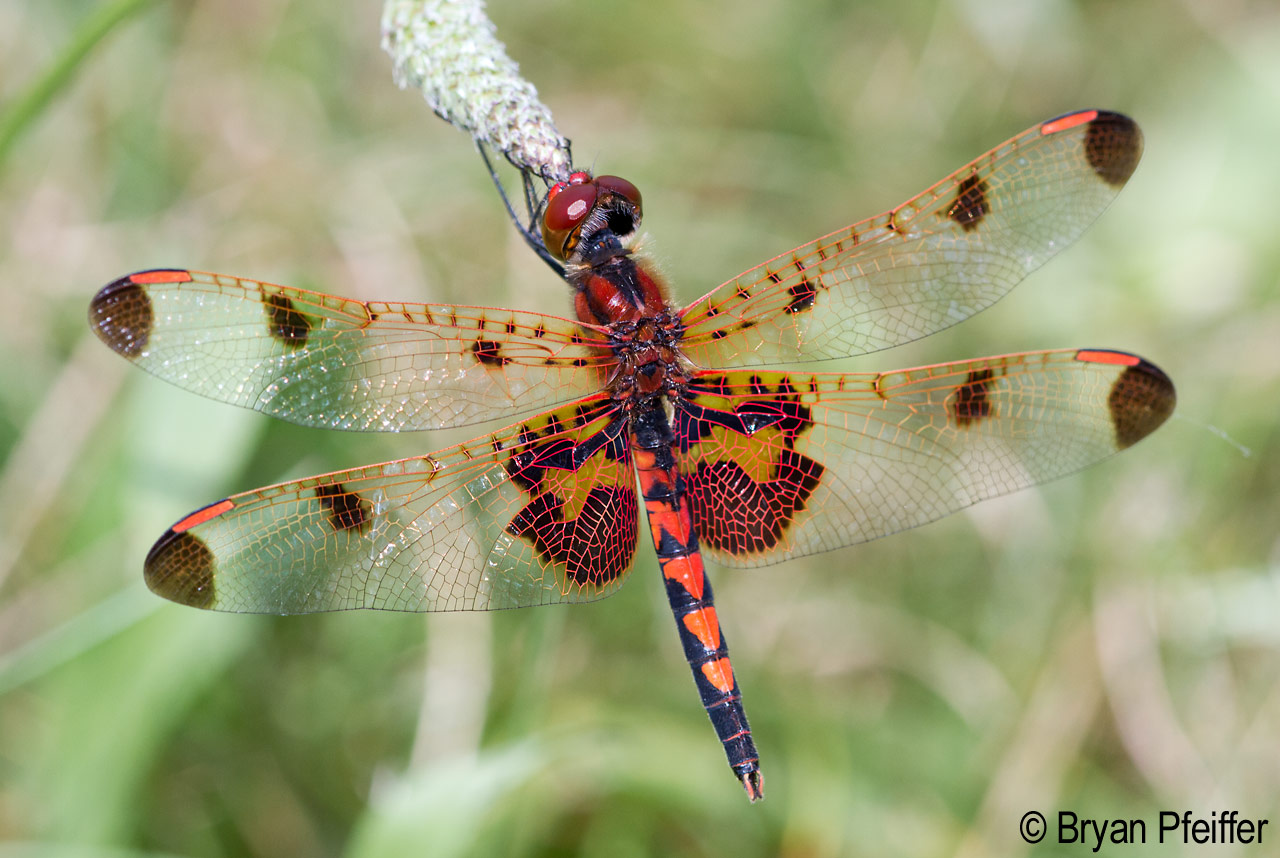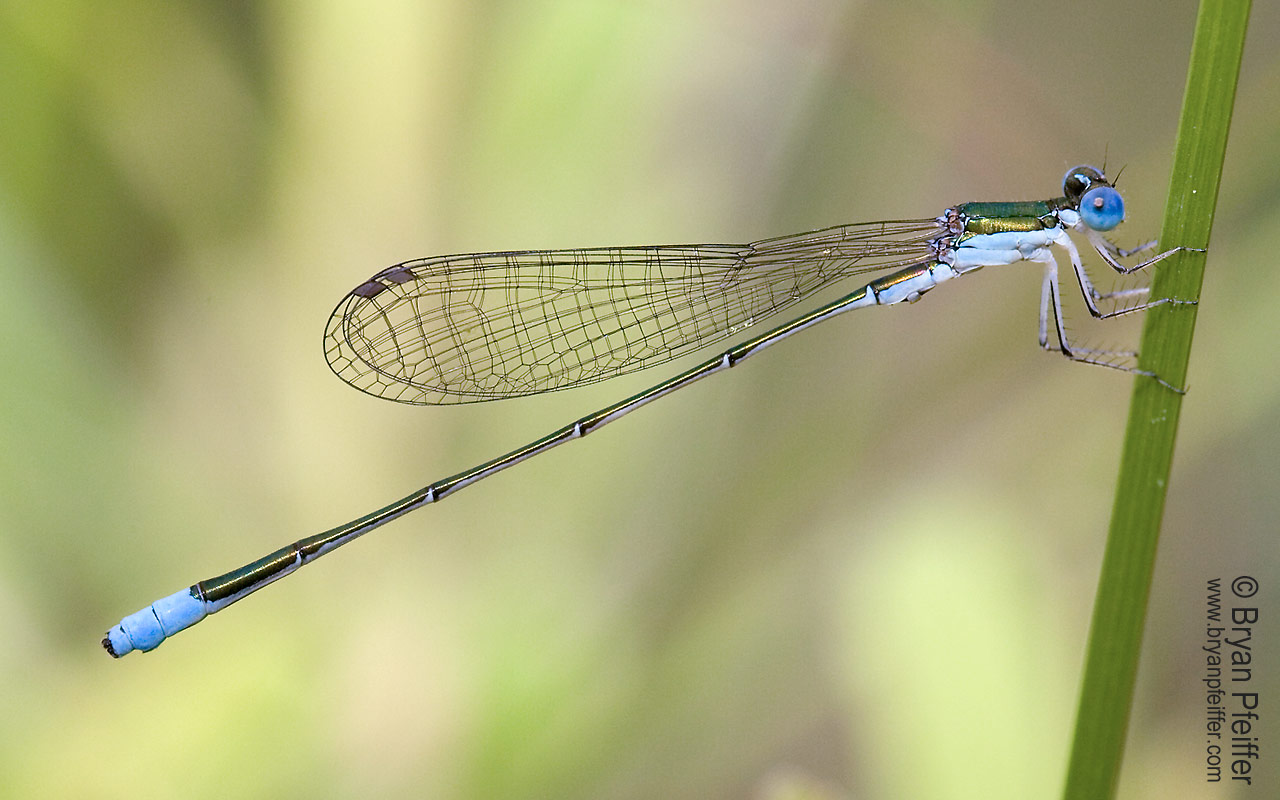Vermont’s New Damselfly and Dragonfly Atlas

Calico Pennant (Celithemis elisa) / © Bryan Pfeiffer
For the better part of the past two decades, I’ve fallen hard for insects. Birding friends here in Vermont and across the continent know this well. “We’ve lost him to the bugs,” some of them would say. Not entirely. (Heck, I’ve been birding nearly every day for the past week or so: two Fox Sparrows and four raging kinglets at North Branch Nature Center here in Montpelier yesterday.)
For those of you who wonder what I’ve been up to out there with an insect net, I bring you the Vermont Damselfly and Dragonfly Atlas. We launched it today, another project of the amazing Vermont Center for Ecostudies, where I’m a research associate.

American Rubyspot (Hetaerina americana)
Why dragonflies? They’ve got the audacity of Peregrine Falcons, the glitter of Painted Buntings, and the dexterity in flight of nothing else on Earth. They’ve even got an extra set of wings. And now they’ve got an atlas. It presents vivid photos, real-time distribution maps and written profiles for 143 damselfly and dragonfly species found everywhere from your backyard pond to remote bogs.
Our atlas data set already has nearly 10,000 records, most of which come from a scientific paper I co-published in 2015 with my colleague Michael Blust. But we’re looking for more data. Birders can help. All the skills you deploy for birds apply to insects. Birders might really like the Atlas’ Most Wanted page — your chance to find new species in the state. Our Resources page includes a Vermont checklist and other helpful documents.
Later this summer, I’ll offer a field session for birders and photographers looking to learn more about this audacious and compelling group of insects (some of which even end up as bird food).
In the meantime, our first dragonflies — migrants from the south — are only days away. Let’s see who among you can report the first Common Green Darner in the state.
To learn more, here’s the official announcement from the Vermont Center for Ecostudies. And here below is a Sphagnum Sprite (Nehalennia gracilis), which is about the size of a festive party toothpick.
Oh, and before dragonflies I chased butterflies around the state to help create the Vermont Butterfly Survey.


Thanks, “Woody.” Odonata Central does have PA records, so that’s a start.
Thanks, Sandra!
Super photos and great data. Wish we had something as good for Pennsylvania.
My second try at leaving a comment. Photo of the Calico Pennant as pretty as my 1st Painted Bunting seen at the Corkscrew Swamp Sanctuary this past March in FL. Love your photos.
Congratulations on a fine work, Bryan! Looks gorgeous!
Ahhh Thank you, Bryan. The photos leave me breathless and so eager for spring!
Wow, Bryan! That is fantastic. Congratulations! I understand why you find the bugs to be so fascinating. Me too. And you know what they say: No bugs, no birds.